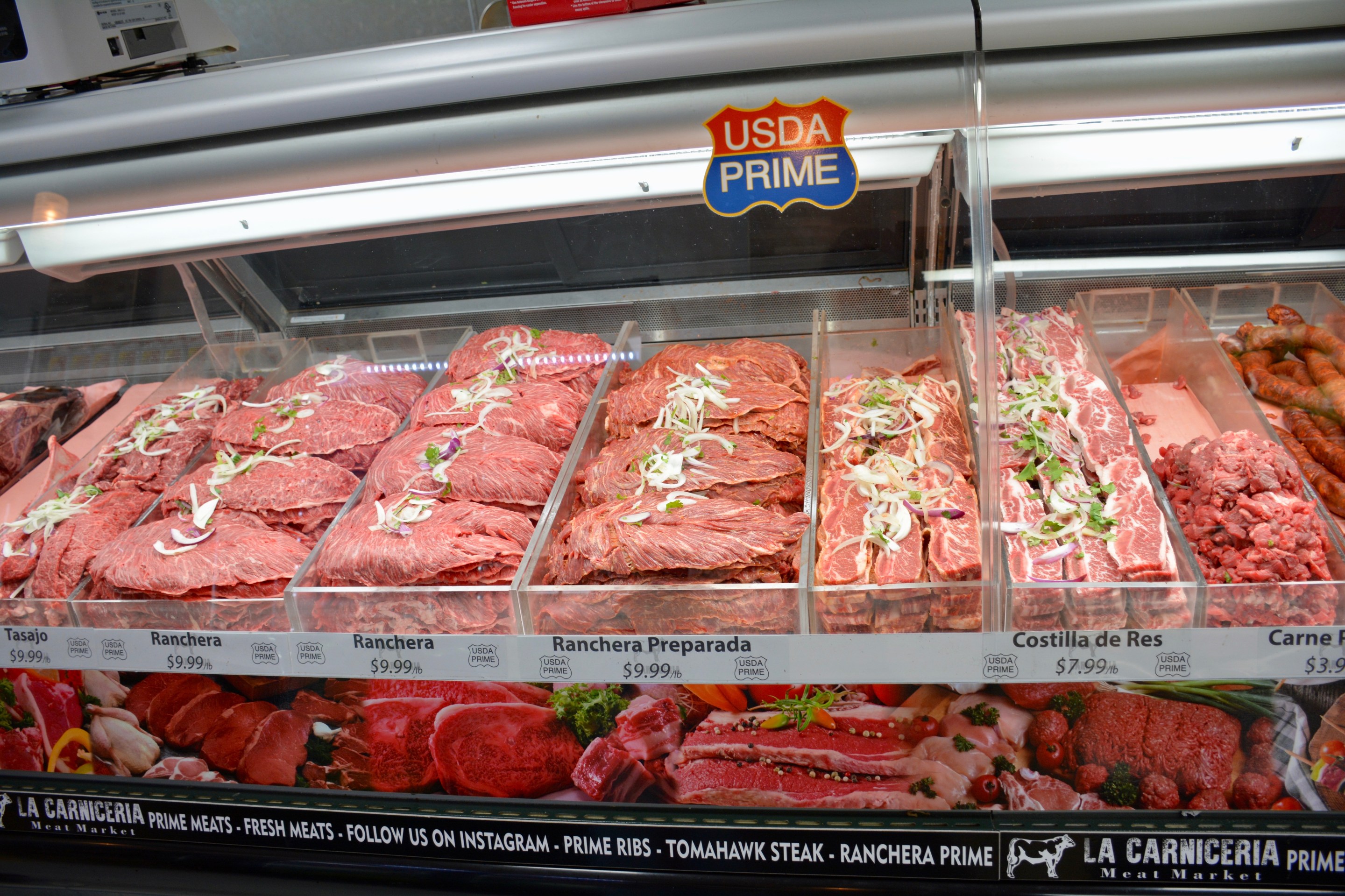[dropcap size=big]"W[/dropcap]hy can’t Mexicans in L.A. have nice things, too?” This was the thought that Jose Luis Ruiz had when he first moved to Los Angeles from Guadalajara, Jalisco seven years ago.
Prior to opening La Carniceria Meat Market in South Gate, a carniceria that is changing the game of backyard carne asada in the area with their densely marbled cuts of prime-grade beef, he had no experience in the meat trade. But as soon as he stepped into his first traditional meat market in the southland and took a bite of his first cut of rubbery carne asada, he knew he had to open a better carniceria and properly represent his home country’s celebrated dish and pastime.
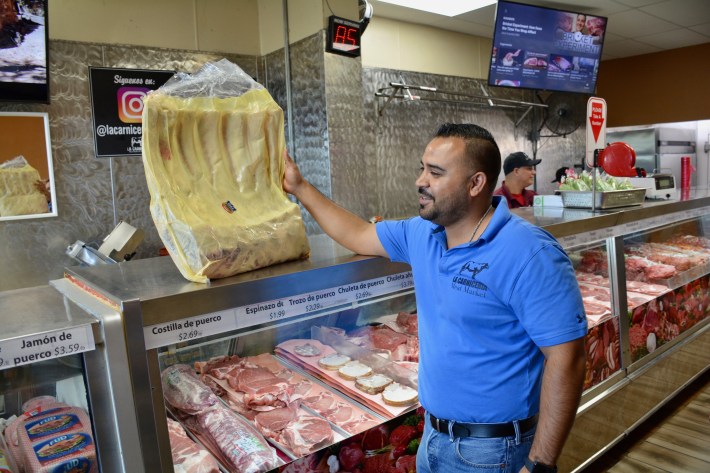
“Where I’m from, people have high expectations and expect products and customer service of only the highest quality,” Ruiz tells me during an afternoon rush at his hole-in-the-wall meat market in South Gate. He is soft-spoken, clean-cut, and is wearing the same royal blue polo shirt with his shop’s logo of cow silhouette as the rest of his employees behind the meat case. There are two massive flatscreen TVs in the back playing a mix of instructional meat-smoking videos on Youtube followed by high-definition corridos verdes music videos.
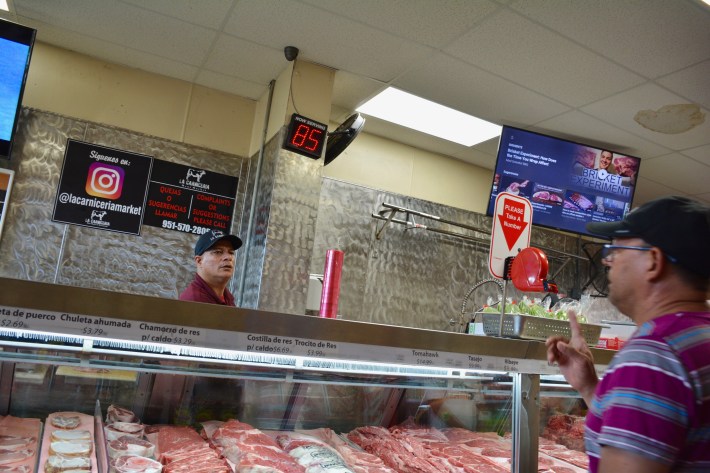
In Mexico and especially in northern states like Nuevo Leon and Sonora, carne asada is a way of life. There is even a national society of carne asada enthusiasts named La Sociedad de Parrilleros Mexicanos that hosts the biggest carne asada annual tournament in Latin America. Consequently, carne asada in Mexico has evolved to use only the juiciest, best quality beef. It is also a status dish in Mexico. In cities like Monterrey, instead of "your mom" jokes, people joke about the thinness of the beef cuts you bring to a carne asada. But this quality carne asada trend hadn’t caught on in California’s meat markets until the opening of La Carniceria two years ago.
View this post on Instagram
Costilla y Ranchera de novillo Choice !!! 🔥🔥🔥🔥🏈🏈🏈🏈
A post shared by La Carniceria Meat Market (@lacarniceriameatmarket) on
In backyard-centric Southern California where it's carne asada season year-round, carne asada is celebrated, but not at the same level as northern Mexico. Since carne asada is usually heavily marinated here and customers tend to gravitate towards quantity over quality, carnicerias have gotten used to using the cheapest cuts of beef available.
“In the beginning, it was hard to convince our customers that prime-grade marbled meat is better than the stuff they were used to buying from your average Mexican carniceria in Los Angeles,” Ruiz tells me. “People in L.A. got really used to lean, chewy beef and thought that this marbled stuff that I was selling was lower quality.” Ruiz started with “Select” USDA grade and then moved on to “Prime.” The majority of the meat you find in Mexican and Central American markets around L.A. is usually the lowest “Choice” USDA grade. “I almost gave up because it just wasn’t selling at first, but once customers gave it a shot, they realized how hard it is to go back to lesser grades of beef.”

A Sunday at La Carniceria
[dropcap size=big]O[/dropcap]n a Sunday afternoon, there is a steady rush of customers coming in and out of the tiny store. Ruiz shares that most of his customers are of Mexican background and usually buy a good amount of meat per visit. Some customers pick up some Sonoran-style flour tortillas that Ruiz also carries, and others a few michelada mix bottles from perhaps the most extensive bottled and powder michelada selection I’ve seen anywhere in the county. The store also carries everything you need for a proper carne asada: mesquite charcoal, red and green salsas, marinated chicken, cheese, and avocados.
His most popular cut is “Ranchera,” which is usually sold under “flap meat” in English at most meat markets. It goes for $9.99 a pound, about $3-$4 more dollars than your standard carniceria carne asada. When I get close to the glass counter and examine the meat, it reminds me of the heavily marbled raw beef I gawked at while perusing the supermarket aisles during a visit to Japan.
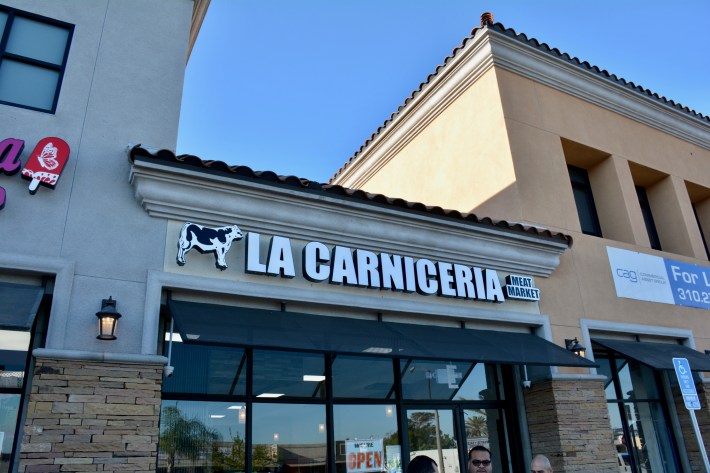
La Carniceria Grows in Bellflower
Ruiz insists that I drive down to his shiny, new second location located deeper in southeast L.A that he opened three months ago to check it out. It’s located in another strip mall in Bellflower about 15 minutes away, next to a La Michoacana paleta shop. Like his original location, this newer one is immaculately clean and doesn’t have that slightly unpleasant raw meat aroma usually found in other carnicerias.

The layout is almost identical to the original one, but in this location, he carries a cut that is quickly gaining popularity with his loyal customers: the monstrously beautiful Wagyu tomahawk steak. Sure enough, as soon as I walk in, a man with his wife and child walks in casually and points to the biggest one they have in the counter. The friendly cashier rings him up for over $90 and makes his way out. I ask the man how he cooks it, expecting a crazy response technique. He responds simply with, “I just grill it.” As he walks out, another man who identifies himself as a local restaurant owner to the butcher comes in and buys two huge bags of meat. Although Ruiz has focused his meat operation primarily to the public and not foodservice distribution yet, something tells me that the word of this juicy beef is spreading among local taqueria owners and more are buying his meat for their own customers.
The ranchera, in particular, stands out for its intensely beef-forward flavor, melt-in-your-mouth tenderness, and thick steak-like juiciness.
Another customer, Eric Miramontes, 36, who is a self-employed trucker, regularly makes the 120-mile round trip to La Carniceria from Rialto with a homie—all in the name of excellent carne asada meat. “We usually drop around $150 per trip between my homie and me.” He admits that he’s bought at least five tomahawks from La Carniceria “The thing is you don’t need much of this cut because it’s so satisfying, one tomahawk is enough to tease your taste buds for you and the family, along with the rest of the meats.”
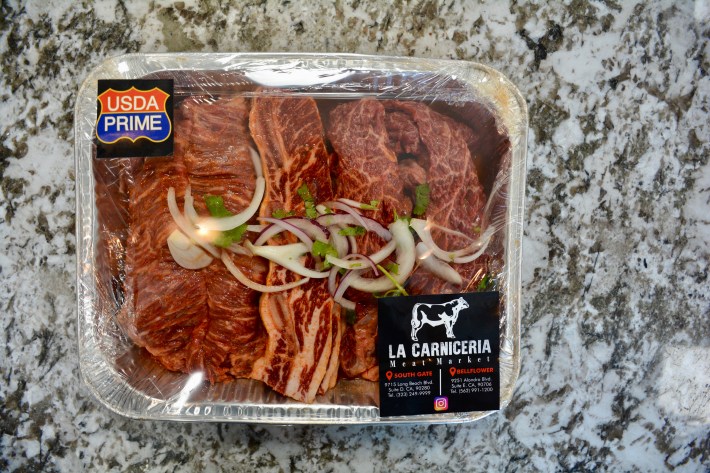
How Does it Taste?
[dropcap size=big]I[/dropcap] take home three of La Carniceria’s most popular beef cuts to grill up that same night: Tasajo, ranchera, and costillas (ribs). Despite insisting to opt-out of having my meat pre-marinated so I can taste the quality of the meat on its own, Arturo Castro, the Bellflower location’s manager, insists harder that I try their marinade. He reveals that 95 percent of their customers ask for their meat to be pre-marinated in their secret mix that he discloses to have "orange juice and a little beer." As if he reads my concerned thoughts he continues, “Our marinade is very low in salt and condiments, allowing you to still taste the quality of our meat’s marbling, so no worries.”
“We have to keep advancing as a culture and continue to show that Mexicans also deserve the best meat possible.”
Once I get back home, fire up my grill with mesquite, and carefully cook the meat to both Mexican-crispy and medium-rare levels, I can vouch for that “hard to go back” statement that Ruiz told me during the interview earlier in the day. The ranchera, in particular, stands out for its intensely beef-forward flavor, melt-in-your-mouth tenderness, and thick steak-like juiciness.
Ruiz is onto something big. Over the 4th of July weekend, he sold over seven tons of prime-grade beef between both locations.
“You’re now seeing other meat markets start to carry this same quality meat because they’re seeing that customers actually do like and are willing to pay for higher-quality meat,” Ruiz says in a follow-up phone interview. “I welcome healthy competition because, at the end of the day, it is for the benefit of the customer.”
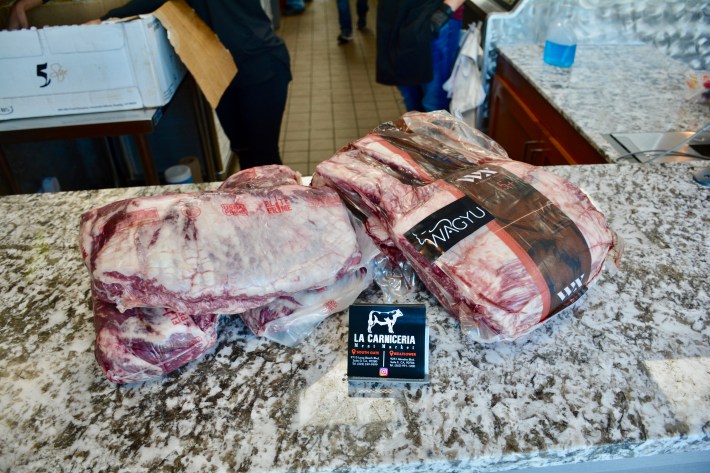
As for the future, Ruiz is already working on securing a third location in the area and hopes to open more soon. “We have to keep advancing as a culture and continue to show that Mexicans also deserve the best meat possible, and most importantly, at accessible prices.”
Editor's note: The interview with Jose Luis Ruiz was in Spanish and was translated into English.
